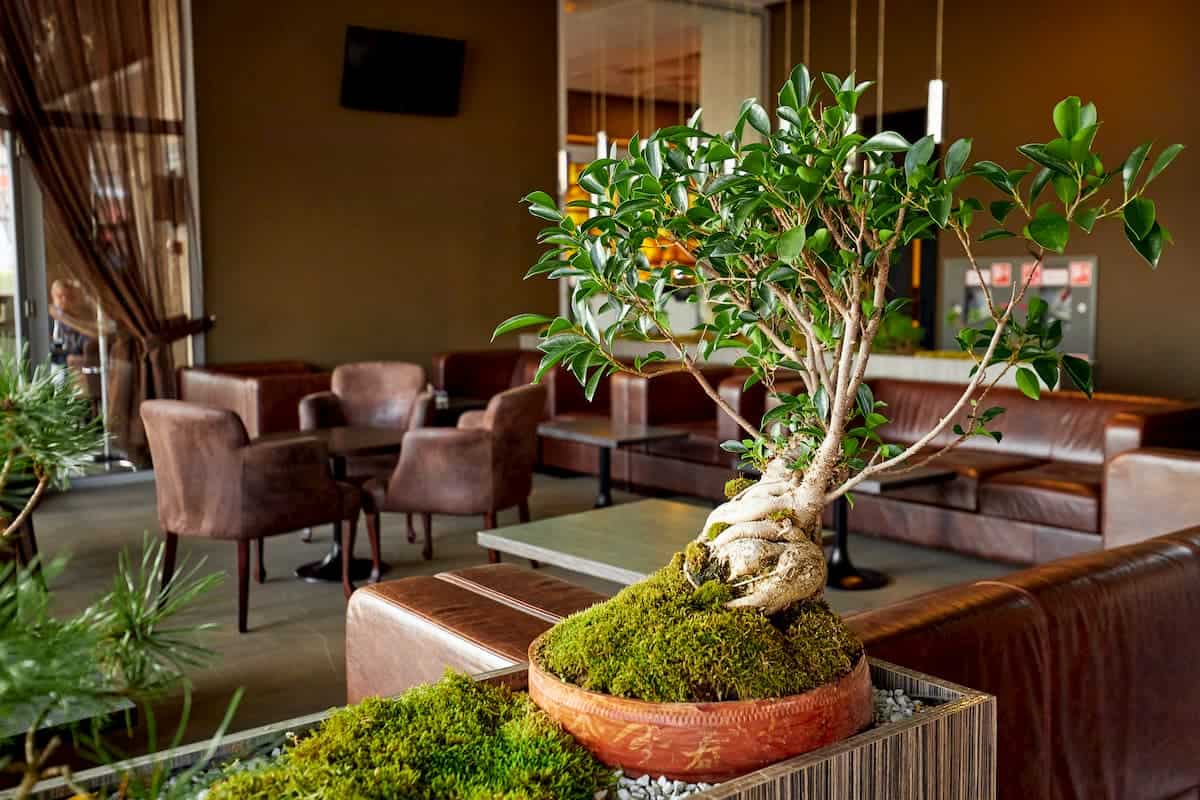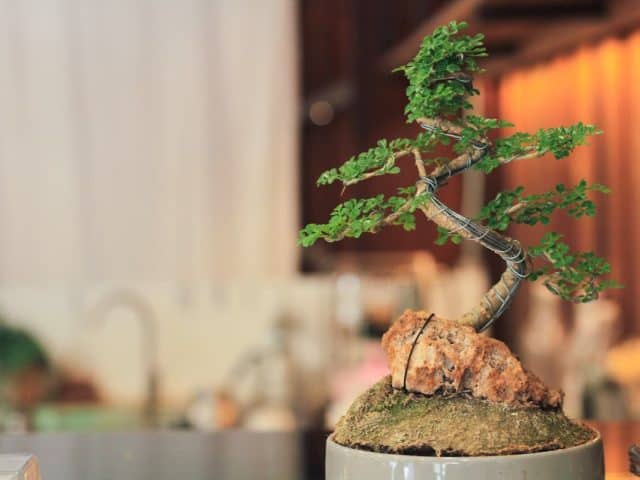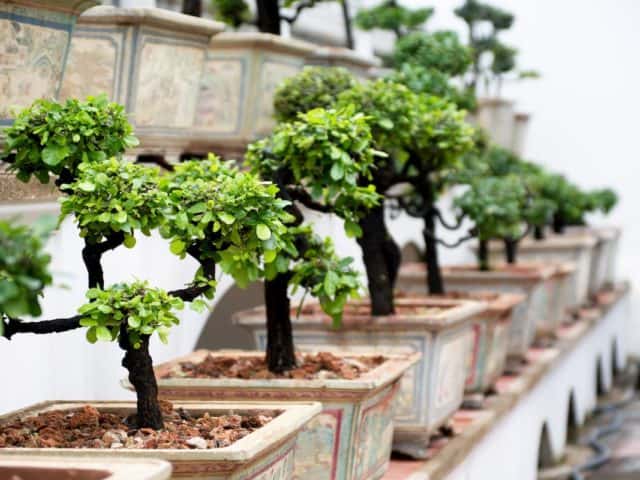If you are wondering if you can trim a Bonsai tree with scissors or what the essential tools you may need, then you came to the right place.
You can trim a bonsai tree with scissors, which are the most basic and irreplaceable tools for bonsai owners. What you need, though, are special scissors specifically crafted for bonsai that are significantly better suited than regular scissors.
Now you know that you’ll need scissors as your core tool for your bonsai. I’ll try to go in-depth about what scissors work best, what other tools you’ll need for trimming a beautiful bonsai, and most importantly, how to maintain them properly. So, let’s get to it, shall we?
Bonsai Scissors vs. Regular Scissors
Bonsai scissors, more commonly called the bonsai shears, are sharper than regular scissors. They have a wider grip handle and small blades.
Traditionally, in Japan, people use shears with butterfly-shaped handles. It is beautiful to look at, and the blades are razor-sharp. Bonsai scissors offer surgical-level precision compared to regular scissors.
Here, I’ll be discussing the difference between the two when it comes to trimming your bonsai tree:
- Regular Scissors: Bonsai trees are small, and their little errant stems and branches are even smaller. Trying to trim them with regular scissors is inconvenient, and you’d often end up damaging the branch itself. You most definitely don’t want to do that, as bonsai trees are quite expensive.
Another thing about bonsai trees is that they are very fragile, and regular scissors are often not made for sharp cuts. It almost rends the branches apart instead of cleanly cutting them. That could cause the damaged area to develop poorly.
- Bonsai Scissors: Bonsai scissors are designed to be extremely sharp and precise. It’s probably the only kind of scissor that can offer you surgical-level precision. That is the precision you need to trim a perfectly healthy and beautiful bonsai.
The large butterfly base of a bonsai scissor gives its blades a lot more force without you having to press harder. That feature is very helpful, as most people can’t apply a lot of pressure while doing something so intricate.
A good bonsai scissor that I’ve always used is the Hanafubuki Wazakura Bonsai Scissors. I’ve noticed that it is sharper than any regular old scissor and makes super neat cuts which is essential for bonsai.

Trimming with Scissors
There are two types of trimming you’d end up doing for your bonsai. The most common type of trimming is for general maintenance, also known as maintenance pruning.
And the other one is the more advanced pruning that people do to get the tree in the desired shape, it’s called styling trim.
You could trim large or medium bonsai for maintenance with regular scissors just fine, as maintenance trimming doesn’t involve any fancy handwork or extreme precision.
It’s only about cleaning out dead branches, maybe a few overgrown leaves, and weeds, that’s it.
Style trimming is a bit tricky as you not only have to be precise about what you’re doing but also have to be aware of the needs of the tree you’re trying to trim.
Not all trees appreciate the same kind of pruning treatment. So, it’s probably a good idea to use decent scissors for anything intricate.
When Not to Use Scissors
It may come as a surprise, but with some trees, it’s better to refrain from using sharp objects for regular trimming. Mostly pine trees and some rare conifers appreciate it if you trim them by hand.
So why do some trees need to be trimmed by hand? Some of these trees develop brown spots where the blade cuts and the wound stays discolored like that permanently. Sometimes that spot can even die, and you’ll have to deal with a dead stain.
So, for fragile trees like these, it’s better to gently pull the shootout with your fingers rather than scissors or any other tools. Make sure your hands are clean before you do it.
Other Tools to Complement Scissors
There is a long list of bonsai tools, and many of them are somewhat expensive. They are very good at doing the specific jobs they are designed to do. It might not be necessary to have all of them at your disposal.
Over here, I’ll list some other essential tools for bonsai. Note that you don’t have to get all of them. If you pair only some of these tools with your scissors, you’d have a solid set of bonsai tools that you can use to do pretty much everything related to bonsai.
Concave Cutter
The first basic tool I would recommend you get, besides a pair of bonsai scissors, is a quality concave cutter. It’s designed almost like the Bonsai scissors at the handle, but the key difference is that it has a round cutting blade, almost like a nail clipper.
A concave cutter is not used for trimming the leaves. Most people use it for trimming the branches. Because Concave cutters leave behind hollow wounds on the bark.
That sort of wound is easier for the tree to heal than a flat wound. It can also be used to cut out Jins, and other odd ends flawlessly.
Do try to get a good quality concave cutter, as cheaper models tend to be inconveniently heavy and might even lack the edge to cut through branches with desired finesse.
Jin Pliers
Jin pliers are another essential tool for bonsai, in my opinion. They are used to bend the branches and wires. They could also be used to create natural deadwood.
Wirecutters
As you probably know, Wiring is a very important part of bonsai. People usually use aluminum or copper wires for bonsai. Wires help bonsai trees take shape.
The jin pliers I mentioned earlier will work just fine for bending these wires, but you’d need to get a decent wire cutter to make precise cuts.
Regular wire cutters that we use are frankly just too big for a bonsai tree. So it’s probably a good idea to get good quality bonsai wire cutters.
With a good pair of bonsai scissors and these three tools, you could start making your bonsai with ease. You would probably have to use your scissors as root shears and twig shears. But that should not be that much of an issue.
Maintaining Your Tools
Good quality bonsai tools are on the expensive side. But these tools tend to be well crafted, especially if it’s from a Japanese manufacturer. So, the base durability of quality bonsai tools is not an issue.
But, as with most tools, repeated usage can wear on them. Thankfully, Quality bonsai tools can last you your entire life if you take care of them properly.
Depending on what sort of tools you bought, the amount of maintenance can vary. Carbon steel needs to be oiled and polished, while stainless steel only needs regular cleaning.
Dirty tools lose their edge early. It makes them cut the tree unevenly in a very messy way. Some fragile trees might not heal such wounds and develop a canker rot.
So Always clean your tools after use, especially after you trim the roots as it makes your scissors come in direct contact with dirt.
Final Thoughts on Can You Trim a Bonsai Tree With Scissors
When you raise a bonsai properly, you want to give it the proper care and love it deserves, and this starts with how you prune and clean up your tree, and scissors are a perfect starting place.
If you are looking for a high-quality bonsai tree, you can’t go to someplace like Amazon. You need to go to the source of super high-quality bonsai, and this is why we suggest Bonsai Boy out of New York.






